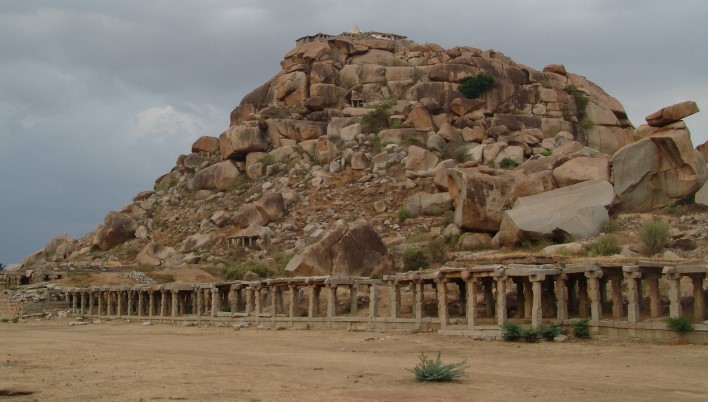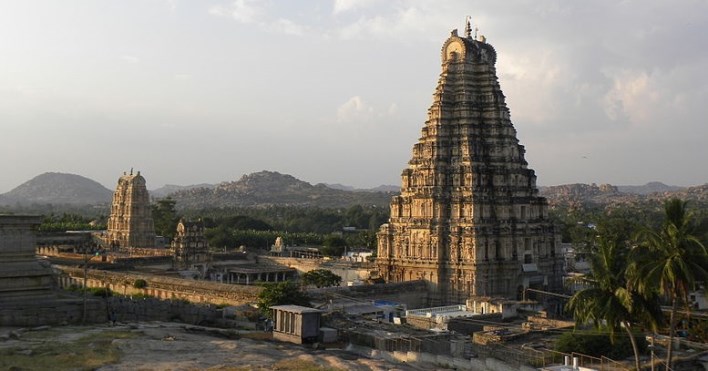Hampi, the ruined village of architectural wonder is one of the most fascinating tourist destinations of India. The ancient village has many attractions to charm tourists and transform them to a world of lost wonder. The place is full of giant temples, splendid palace, amazing monuments, market streets, fortifications, aquatic structures and several other man-made wonders. In fact, the small village can be considered to be an open museum of history and architecture.
Visitors on the Hampi trail can explore several interesting sites and attractions that represent a world of classic beauty and sculptor. The unique stone monuments and structures of Hampi have earned it a place in the list of UNESCO World Heritage sites. Listed below are some of the most popular attractions of Hampi.
Vittala Temple: Vittala Temple is one of the most splendid structures of Hampi. This extravagant architectural wonder was built in the 16th century. The temple is famous for its intricately carved pillars and a huge stone chariot that stands inside the temple complex. [Read here more about Vittala Temple]
Virupaksha Temple: Virupaksha temple is considered to be the oldest temple in Hampi. The main attractions of the temple include a sprawling temple complex having beautifully carved stone pillars, towering gateways, a huge temple kitchen, large halls and attractive lamp posts. It is a famous pilgrimage site as well as a popular tourist spot.
Royal Enclosure: The Royal Enclosure is a fortified area that spreads across hundreds of square metres of land. This area was the seat of power of the Vijayanagara Empire. It has many interesting structures that attract visitors even in their ruined conditions. Imposing structures like the Dassera Platform and the King’s Audience Hall are part of the Royal Enclosure.
Kadalekalu Ganesha: Kadalekalu Ganesha is a giant statue of Lord Ganesha. The speciality of the towering statue is that it was carved out of a single stone. The statue is situated inside a beautiful shrine that overlooks the lovely surroundings of the Hemakuta Hill in Hampi.
Sasivekalu Ganesha: Sasivekalu Ganesha is a 8 feet high statue of Lord Ganesha that stands inside an open pavilion. The statue has a snake tied around its tummy. The statue dates back to the 16th century AD. It is one of the most frequented sites of Hampi.
Krishna Temple: The Krishna Temple is one of the most popular temples in Hampi. The temple is dedicated to the worship of Lord Krishna as an infant. The temple has spectacular carvings on its walls and entrances. Several small shrines and pillared halls dot the campus of the temple.
Hazara Rama Temple: The Hazara Rama Temple is a significant shrine in Hampi. It was once the private temple of the kings and the royal family of the Vijayanagara Empire. The reigning deity of the temple is Lord Rama. The temple is known for its bas relics and panels that depict the story of Ramayana.
Pattabhirama Temple: The Pattabhirama Temple is a large temple that stands within a sprawling campus. The temple is dedicated to the worship of Lord Rama. The beautiful temple is known for its intricate architecture and is very popular among the tourists.
Lotus Mahal: The Lotus Mahal or Kamal Mahal is a grand structure that stands within the Zenana enclosure or the secluded area that was reserved for the royal women of the Vijayanagara Empire. The speciality of the structure is that it showcases a blend of the splendid Vijayanagara architecture and the impressive Islamic style of architecture. [Read here more about Lotus Mahal]
Elephant Stables: The Elephant Stables in Hampi is one of the major tourist attractions of the ruined village. The stables are also one of the least destroyed structures of Hampi. The stables comprise of a long building with a row of domed chambers. The chambers were the resting place of the royal elephants of the Vijayanagara Empire.

Hampi Bazaar. Photographer Bryce Edwards
Hampi Bazaar: Hampi Bazaar was a thriving market during the glorious days of the Vijayanagara Empire. The Hampi Bazaar is located in front of the Virupaksha Temple. It was once a flourishing market where merchants from various foreign lands used to sell attractive and unusual items. Today the bazaar sells local artefacts and is often visited by tourists. [read more about Hampi Bazaar here]
Achyutaraya temple: The Achyutaraya temple is a fine structure that represents the beauty of the Vijayanagara style of architecture. The temple is dedicated to Lord Tiruvengalanatha, a form of Vishnu. The structure of the temple complex is a unique one as it has two enclosures instead of one enclosure, as is the general norm.
Chandramauleshwar Temple: The Chandramauleshwar Temple is a major attraction of visitors on the Hampi trail. This 900 year old temple is a fine example of the craftsmanship of the Vijayanagara workers who had the skill and creativity to build such beautiful stone monuments. The temple is considered to be a Monument of National Importance.
Archaeological Museum: The Archaeological Museum at Kamalapura in Hampi is a treasure trove of historical artefacts and ancient relics. The museum is a significant one as it has rare and unique collections of sculptures and artefacts that belong to the Vijayanagara Empire as well as the British rulers of Hampi.
Gagan Mahal (Old Palace): The Gagan Mahal or the Old Palace in Hampi is a historical structure. The palace was of great importance during the rule of the Vijayanagara Empire. The ancient palace dates back to the 16th century. It is one of the main attractions of Hampi. It is famous for the intricate carvings on the walls and the decorated balconies.
These are just a few of the numerous attractions that await visitors in Hampi. Each structure and monument has a history of its own and offers a lot of information about the grandeur of the Hampi and the Vijayanagara Empire.
Also See:
